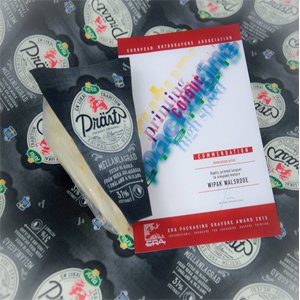
We know that many grocery shoppers make impromptu purchase decisions while pursuing the multiple competing food products in each grocery aisle. There is a need to enhance products beyond traditional packaging features such as color, graphics and shape in order to keep them fresh and appealing to consumers.
Visual cues, such as eye-catching and attractive design, might have been at the forefront of the food product experience, but contemporary grocery shoppers now expect an integration
of sensory elements. While the looks of a package may initially spark a consumer’s interest in a product, it is how it feels in the hand that can impact the desire to purchase. Potential buyers are drawn to the tactile sensation of packaging. For instance, if packaging has a soft or silky feel, it can suggest that the product is luxurious or of high quality. Packaging is no longer about being seen but also about being felt, guaranteeing that touch is undeniably a significant part of the grocery shopper’s experience.

soy ink on cotton paper to increase the tactile quality
of the packaging
A study by the California Institute of Technology1 reveals that the activity of our orbitofrontal cortex, where sensory integration and decision-making are processed, is linked to our willingness to purchase products. Tactile food packaging appeals to the sense
of touch through weight, texture and softness, potentially swaying how we will perceive the product. In offering potential buyers the experience of synaesthesia, a phenomenon where one sensory experience will trigger another, tactile-focused food packaging enhances the ability to engage the senses and influence purchasing decisions. Through touch, the product’s emotional and intellectual messages are effectively conveyed.

Take a fruit smoothie carton, for instance. Depending on the fruit ingredients included, the packaging may mimic the slightly waxy feel of a red apple, the fuzziness of a peach, or even the smoothness of coconut flesh. Sensations such as waxiness, fuzziness or smoothness suggests the freshness of the fruit used in the smoothie. The advancement of packaging technologies means that tactility can now come in many shapes and forms. From rubber-like sensations to embossed surfaces, there are a myriad ways for the food product to elevate the shopping experiences of potential buyers.
Tactile food packaging not only takes away the reliance on solely visual cues, but differentiates the product by offering a more nuanced experience in its consideration of how and why a product should feel the way it does. Despite the higher cost and longer production time, it is obvious that most grocery shoppers will find products with tactile packaging more appealing. In the future, tactile packaging, along with methods to reach the other senses of scent, taste and auditory, may be considered for a wholesome product experience.









